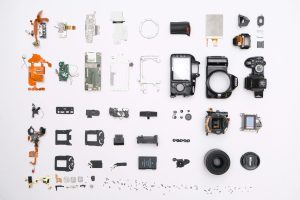The History and Engineering of the Mechanical Keyboard Revival
In the world of keyboards, there are two main types that reign supreme: the membrane keyboard and the mechanical keyboard. While membrane keyboards are more common and often considered the standard, mechanical keyboards have been steadily gaining popularity in recent years. But what exactly is a mechanical keyboard and why has it experienced a revival? In this article, we’ll delve into the history and engineering behind the mechanical keyboard revival, exploring how this seemingly simple device has evolved and why it has captured the attention of keyboard enthusiasts and casual users alike.
The History of Mechanical Keyboards
The invention of the mechanical keyboard can be traced back to the early 18th century, with the first patent for a typewriter being granted to British inventor Henry Mill in 1714. However, it wasn’t until the 1860s that Christopher Sholes, Carlos Glidden, and Samuel W. Soule created what is considered the first commercially successful typewriter – the Sholes and Glidden Type-Writer. This revolutionary machine used a mechanical system of levers and linkages to transfer key presses to the paper, paving the way for the modern mechanical keyboard.
Fast forward to the 20th century, and mechanical keyboards became the standard for typewriters and computer keyboards due to their durability and tactile feedback. However, in the 1980s, membrane keyboards – which use a pressure-sensitive membrane to register key presses – were introduced and eventually replaced mechanical keyboards due to their lower cost. This marked the beginning of the decline of mechanical keyboards.
The Decline of Mechanical Keyboards
Throughout the 1990s and early 2000s, mechanical keyboards fell out of favor as membrane keyboards dominated the market. They were cheaper, quieter, and required less maintenance, making them a more attractive option for both consumers and manufacturers. It seemed like the era of the mechanical keyboard was over.
However, a small community of keyboard enthusiasts held on to their beloved mechanical keyboards, with some even customizing and modifying them to enhance their performance. This online community formed a niche market for mechanical keyboards, which eventually caught the attention of major manufacturers like Corsair and Razer. These companies began producing mechanical keyboards of their own, sparking the revival of the once-dying technology.
The Engineering Behind Mechanical Keyboards
So, what exactly makes mechanical keyboards so special? Unlike membrane keyboards, which use a single rubber membrane to register key presses, mechanical keyboards use individual switches for each key. These switches consist of a spring and a metal connector known as a “buckling spring”. When a key is pressed, the spring compresses, and the buckling spring snaps against a contact, closing the circuit and registering the key press.
This mechanical system not only provides a satisfying tactile feedback and audible click, but it also allows for greater precision and durability. The individual nature of the switches means that even if one key fails, the rest of the keyboard will still function, making it a much more reliable option for those who use their keyboards extensively.
The Popularity of Mechanical Keyboards Today
As more and more people became aware of the benefits of mechanical keyboards, their popularity continued to grow. Keyboard enthusiasts and gamers, in particular, were drawn to the responsive and customizable nature of mechanical keyboards. Today, mechanical keyboards come in a variety of switch types – each with its unique feel and sound – and can be customized with different keycaps and designs.
Besides their performance and customization options, there is also a certain nostalgia and aesthetic appeal associated with mechanical keyboards. Many users enjoy the vintage look and feel of these keyboards, as it harkens back to a time before technology became so disposable.
In Conclusion
The history and engineering of the mechanical keyboard revival are a testament to the impact that a seemingly simple device can have. From the early typewriters to the modern-day gaming keyboards, mechanical keyboards have stood the test of time and continue to evolve to meet the needs and preferences of users. Whether you’re a keyboard enthusiast, a gamer, or simply in search of a more reliable and satisfying typing experience, the mechanical keyboard revival has something to offer.










